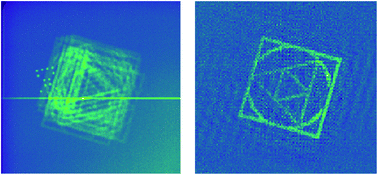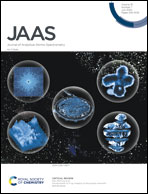Comparison of three reconstruction methods based on deconvolution, iterative algorithm and neural network for X-ray fluorescence imaging with coded aperture optics
Abstract
X-ray imaging methods are used in many fields of research, as they allow a non-destructive investigation of the elemental content of various samples. As for every imaging method, for X-ray imaging the optics are of crucial importance. However, these optics can be very expensive and laborious to build, as the requirements on surface roughness and precision are extremely high. Angles of reflection and refraction are often in the range of a few mrad, making a compact design hard to achieve. In this work we present a possibility to simplify X-ray imaging. We have adapted the coded aperture method, a high energy radiation imaging method that has its origins in astrophysics, to full field X-ray fluorescence imaging. In coded aperture imaging, an object is projected through a known mask, the coded aperture, onto an area sensitive detector. The resulting image consists of overlapping projections of the object and a reconstruction step is necessary to obtain the information from the recorded image. We recorded fluorescence images of different samples with an energy-dispersive 2D detector (pnCCD) and investigated different reconstruction methods. With a small coded aperture with 12 holes we could significantly increase the count rate compared to measurements with a straight polycapillary optic. We show that the reconstruction of two different samples is possible with a deconvolution approach, an iterative algorithm and a neural network. These results demonstrate that X-ray fluorescence imaging with coded apertures has the potential to deliver good results without scanning and with an improved count rate, so that measurement times can be shortened compared to established methods.



 Please wait while we load your content...
Please wait while we load your content...